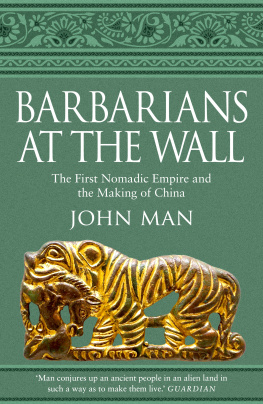Christopher I. Beckwith - The Scythian Empire: Central Eurasia and the Birth of the Classical Age from Persia to China
Here you can read online Christopher I. Beckwith - The Scythian Empire: Central Eurasia and the Birth of the Classical Age from Persia to China full text of the book (entire story) in english for free. Download pdf and epub, get meaning, cover and reviews about this ebook. City: Princeton, year: 2023, publisher: Princeton University Press, genre: History. Description of the work, (preface) as well as reviews are available. Best literature library LitArk.com created for fans of good reading and offers a wide selection of genres:
Romance novel
Science fiction
Adventure
Detective
Science
History
Home and family
Prose
Art
Politics
Computer
Non-fiction
Religion
Business
Children
Humor
Choose a favorite category and find really read worthwhile books. Enjoy immersion in the world of imagination, feel the emotions of the characters or learn something new for yourself, make an fascinating discovery.

- Book:The Scythian Empire: Central Eurasia and the Birth of the Classical Age from Persia to China
- Author:
- Publisher:Princeton University Press
- Genre:
- Year:2023
- City:Princeton
- Rating:3 / 5
- Favourites:Add to favourites
- Your mark:
The Scythian Empire: Central Eurasia and the Birth of the Classical Age from Persia to China: summary, description and annotation
We offer to read an annotation, description, summary or preface (depends on what the author of the book "The Scythian Empire: Central Eurasia and the Birth of the Classical Age from Persia to China" wrote himself). If you haven't found the necessary information about the book — write in the comments, we will try to find it.
A rich, discovery-filled history that tells how a forgotten empire transformed the ancient world
In the late 8th and early 7th centuries BCE, Scythian warriors conquered and unified most of the vast Eurasian continent, creating an innovative empire that would give birth to the age of philosophy and the Classical age across the ancient worldin the West, the Near East, India, and China. Mobile horse herders who lived with their cats in wheeled felt tents, the Scythians made stunning contributions to world civilizationfrom capital cities and strikingly elegant dress to political organization and the world-changing ideas of Buddha, Zoroaster, and LaotzuScythians all. In The Scythian Empire, Christopher I. Beckwith presents a major new history of a fascinating but often forgotten empire that changed the course of history.
At its height, the Scythian Empire stretched west from Mongolia and ancient northeast China to northwest Iran and the Danube River, and in Central Asia reached as far south as the Arabian Sea. The Scythians also ruled Media and Chao, crucial frontier states of ancient Iran and China. By ruling over and marrying the local peoples, the Scythians created new cultures that were creole Scythian in their speech, dress, weaponry, and feudal socio-political structure. As they spread their language, ideas, and culture across the ancient world, the Scythians laid the foundations for the very first Persian, Indian, and Chinese empires.
Filled with fresh discoveries, The Scythian Empire presents a remarkable new vision of a little-known but incredibly important empire and its peoples.
Christopher I. Beckwith: author's other books
Who wrote The Scythian Empire: Central Eurasia and the Birth of the Classical Age from Persia to China? Find out the surname, the name of the author of the book and a list of all author's works by series.











